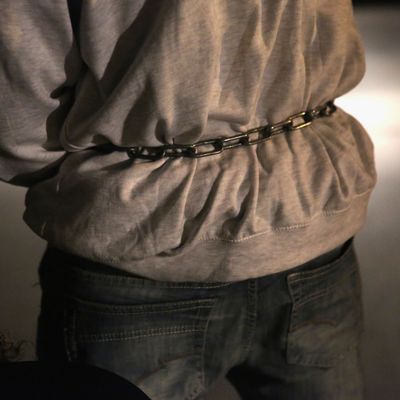
For the first time in modern American history, the government decides to detain all Central American women and children seeking asylum in the U.S., instead of allowing them to live freely until their days in court. The policy change is intended to send a message to anyone else seeking refuge from a plague of gang violence below our southern border: Don’t believe everything you read on the Statue of Liberty.
And to implement this draconian proposal, the government awards a well-connected private prison company with a $1 billion no-bid contract — one that promises to pay the firm $20 million a month, no matter how few migrants its facility is responsible for housing at a given time. Then federal courts rule that this policy of mass detention isn’t actually legal. But the contract is already signed, and so the Corrections Corporation of America collects millions in taxpayer money to maintain a nearly empty detention center.
This may sound like the kind of cruel, incompetent policy-making you’d expect from Donald Trump’s administration. But it’s actually the work of Barack Obama’s. Per the Washington Post:
As Central Americans surged across the U.S. border two years ago, the Obama administration skipped the standard public bidding process and agreed to a deal that offered generous terms to Corrections Corporation of America, the nation’s largest prison company, to build a massive detention facility for women and children seeking asylum.
The four-year, $1 billion contract — details of which have not been previously disclosed — has been a boon for CCA, which, in an unusual arrangement, gets the money regardless of how many people are detained at the facility. Critics say the government’s policy has been expensive but ineffective. Arrivals of Central American families at the border have continued unabated while court rulings have forced the administration to step back from its original approach to the border surge.
When the federal government wants to pay one of our nation’s esteemed prison profiteers to build a detention center, it typically forces those companies into a bidding war. Nearly all private prison contracts allow federal funding to rise and fall along with the percentage of beds being occupied at a given facility. The government uses the bidding process to win taxpayers the best possible bargain.
That’s how it’s supposed to work, anyway. But in the case of the South Texas Family Residential Center, the Feds agreed to pay CCA for 100 percent capacity at all times, even when the facility is half-full — as it has been for months now.
CCA secured that sweetheart gig by offering the administration a quick way to get “tough” on the border amid the 2014 migrant crisis. Homeland Security secretary Jeh Johnson had become convinced that the only way to stem the tide of child migrants was through an “aggressive deterrence strategy.” Unable to deport asylum-seekers without giving them the opportunity to press their claims, Johnson decided mass detention would send the necessary message.
To get around a public bidding process that would have delayed construction, CCA convinced the town of Eloy, Arizona, to amend its existing contract with the company, to include provisions for the new facility.
And then federal courts ruled that detaining asylum-seekers for the purposes of deterrence is illegal. And then another noted that, for two decades, the U.S. government has been legally required to house migrant children in “the least restrictive environment possible.”
Now the government pays millions each month for CCA to maintain hundreds of empty beds, while the number of new migrants crossing the border over the past 12 months is higher than it was during the same period two years ago.
The administration no longer describes the facility as a means of deterrence. But if the administration’s goal had been to limit migrants’ flight risk — rather than to make their lives miserable as a message to others — they could have pursued low-cost options like monitoring bracelets, instead a $1 billion facility.
But at least the South Texas Family Residential Center worked out for one set of stakeholders, or, more precisely, one set of shareholders. Per the Post:
CCA declined to comment on the evolution of family detention policy. But Hininger, CCA’s chief executive, said in a release for investors that the company was “pleased” with its performance at the start of the year. Its increase in revenue, the company said, was “primarily attributable” to the South Texas Family Residential Center.






























